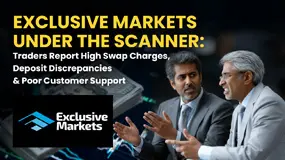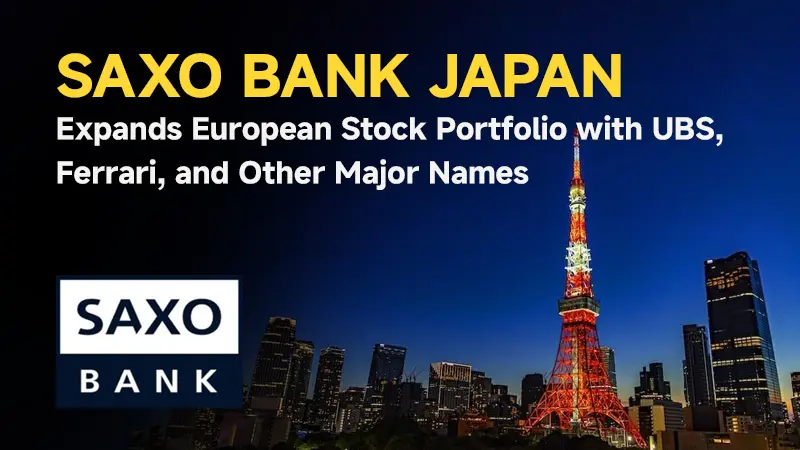简体中文
繁體中文
English
Pусский
日本語
ภาษาไทย
Tiếng Việt
Bahasa Indonesia
Español
हिन्दी
Filippiiniläinen
Français
Deutsch
Português
Türkçe
한국어
العربية
Protect Your Portfolio in the Storm | What Are Safe Haven Assets?
Abstract:Gold surged to an all-time high on Tuesday, driven by renewed weakness in the US dollar, ongoing trade war tensions, and critical remarks from President Donald Trump aimed at the Federal Reserve. These factors fuelled strong demand for safe-haven assets, pushing bullion above US$3,485 an ounce for the first time. But what exactly are safe haven assets? Why is everyone raving about them?

In a world where financial markets can shift direction at a moments notice, especially in amidst of this chaotic trade war, it is a must for investors and traders to focus on managing risk and preserving capital. Enter safe haven assets - the financial instruments that offer a sense of stability when the rest of the market is in turmoil.

Safe haven assets are investments that tend to hold or even increase their value during periods of heightened market volatility or economic uncertainty. Their key function is not to drive aggressive returns, but to act as a cushion when riskier assets falter. In essence, they provide peace of mind and a financial anchor when panic takes hold.

Market cycles are inevitable. From recessions to geopolitical shocks and black swan events like the COVID-19 pandemic, the one certainty in investing is uncertainty itself. Safe haven assets act as a buffer in such times, helping investors weather volatility and avoid severe losses. While they may not always outperform in bullish markets, their utility shines when portfolios are at risk of sharp drawdowns.
Characteristics of Safe Haven Assets
To qualify as a safe haven, an asset generally needs to be:
- Stable and resilient under economic stress.
- Highly liquid, ensuring quick convertibility to cash.
- Uncorrelated or negatively correlated to riskier asset classes like equities.
- Trusted over time as a reliable store of value.

- Gold: A centuries-old symbol of wealth preservation, gold often surges when inflation bites or currencies weaken. Gold surged to an all-time high on Tuesday, driven by renewed weakness in the US dollar, ongoing trade war tensions, and critical remarks from President Donald Trump aimed at the Federal Reserve. These factors fuelled strong demand for safe-haven assets, pushing bullion above US$3,485 an ounce for the first time.
- Government Bonds: Especially those from stable economies like the US, Germany, or Switzerland, sovereign bonds are widely seen as low-risk refuges.
- Currencies: The Swiss franc and Japanese yen are historically favoured during times of market stress due to their economic stability.
- Certain Real Assets: Some forms of real estate or infrastructure investments may also be considered safe havens, depending on their location and demand.
Integrating safe haven assets into a portfolio is a cornerstone of robust risk management. While they may not offer spectacular growth, they significantly reduce overall volatility and drawdown. In times of financial panic, having a diversified mix that includes these instruments allows investors to avoid knee-jerk reactions and hold steady.
Moreover, safe havens like gold can serve as a hedge against inflation, preserving purchasing power when fiat currencies decline in real terms.
Its important to strike a balance as every market reaction is unique. Overexposure to safe haven assets could result in missed opportunities during market recovery or bull markets. Their returns are generally lower compared to equities or alternative assets. However, their true value emerges during downturns, when preserving capital becomes more important than chasing profits.

Disclaimer:
The views in this article only represent the author's personal views, and do not constitute investment advice on this platform. This platform does not guarantee the accuracy, completeness and timeliness of the information in the article, and will not be liable for any loss caused by the use of or reliance on the information in the article.
Read more

JP Markets Review: High Spread & Commission, Fake Bonus Lure & Withdrawal Hassles Frustrate Traders
Have you been lured into opening a JP Markets Forex Trading Account with a high bonus offer that never existed? Have you found the spread and commission charges higher on JP Markets Login than what’s advertised on the broker’s website? Wondering why you are not able to withdraw funds from your trading account? Well, all of these hint at a potential forex investment scam. Many traders have expressed their disappointment while sharing the JP Markets Review online. In this article, we have shared certain complaints. Take a look at them.

Exclusive Markets Under the Scanner: Traders Report High Swap Charges, Deposit Discrepancies & More
Is your forex trading account experience at Exclusive Markets far from good? Do you witness high swap fees and daily charges? Does the deposit fail to reflect in your Exclusive Markets Login? Don’t receive adequate response from the customer support official on your trading queries? You are not alone! Traders have already alleged that the forex broker is involved in these activities. In this Exclusive Markets WikiFX review article, we shared some traders’ comments. Read on to know about them.

Is Amillex Safe or a Scam? Understanding Rules and Security
You are asking an important question: Is Amillex safe or a scam? The simple answer is that Amillex works in an unclear area that needs careful study. It is not a complete scam like fake websites that steal your money right away, but it also does not meet the safety rules of the best, well-regulated brokers. Read on to explore more details.

Saxo Bank Japan Expands European Stock Portfolio with UBS, Ferrari, and Other Major Names
Saxo Bank Japan is broadening its investment offerings by adding over 100 European stocks from Denmark, Italy, Spain, and Switzerland. The expansion—set to launch on November 5, 2025—includes globally recognized companies such as UBS, Ferrari, Novo Nordisk, and Nestlé. This initiative enhances Saxo Bank Japan’s already extensive global stock lineup, aiming to support investors seeking diversification into leading European industries.
WikiFX Broker
Latest News
Angel one 2025 Review & Complaints
Latest FCA Daily Alerts and Consumer Warnings for 2025
Webull Widens Crypto Futures with Coinbase Derivatives
Is Nash Markets Regulated or Risk? Truth About Nash Markets’ License & Withdrawal Issues
CySEC Blocks Certification Access to Combat Advisor Impersonation
Exclusive Markets Under the Scanner: Traders Report High Swap Charges, Deposit Discrepancies & More
Pinched By Penny Shortage, US Retailers Beg Congress To Step In
Saxo Bank Japan Expands European Stock Portfolio with UBS, Ferrari, and Other Major Names
Amillex Broker Affiliate Program: A Complete Guide to Earning with Referrals
New SC Rules Take Effect in November 2025: What’s Next for Finfluencers?
Currency Calculator



